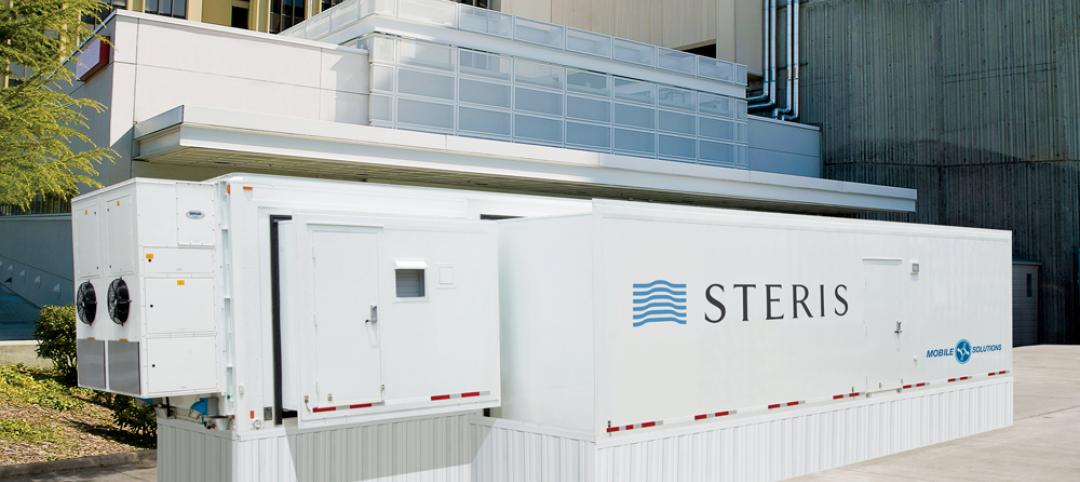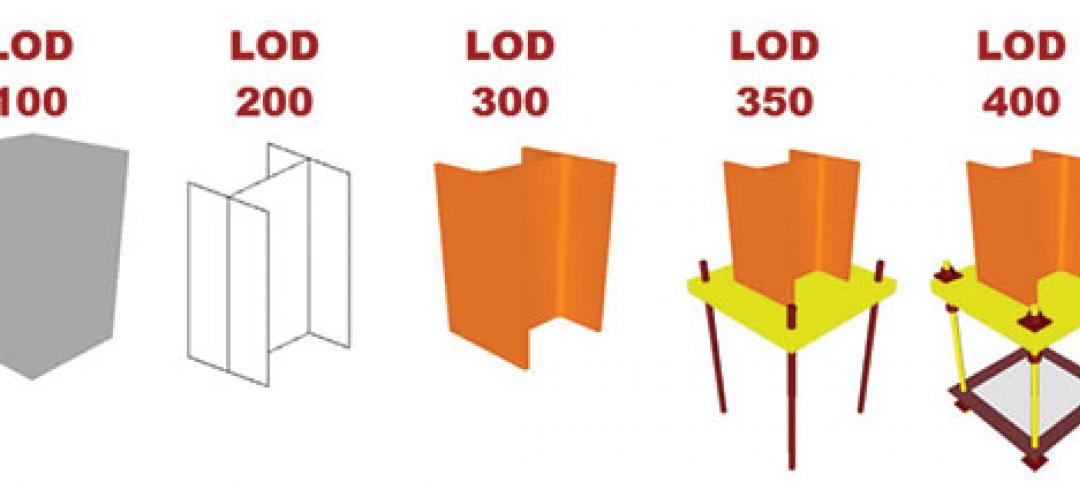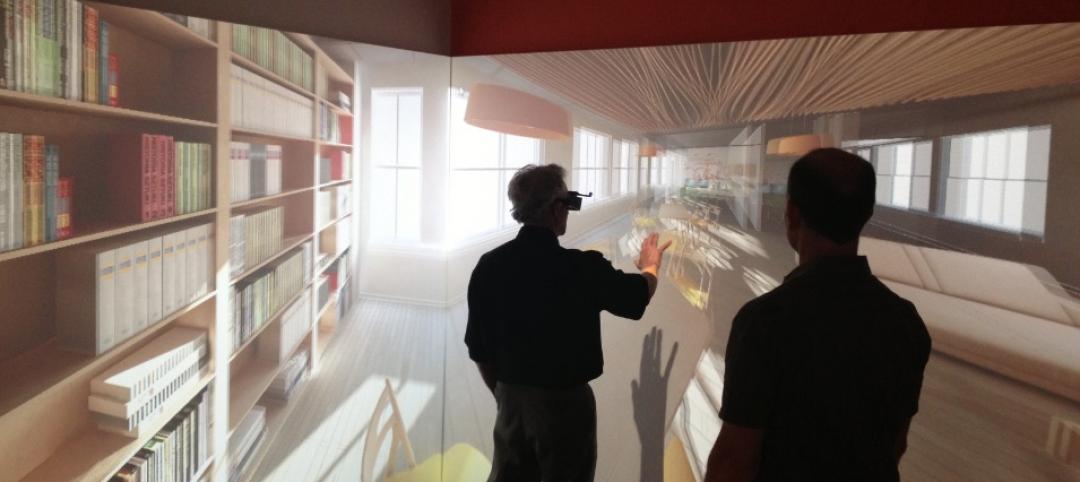The venerable portable document format (created in 1993 by Adobe Systems), an open standard since 2008, has evolved well beyond the simple document format it was created to be.
Today’s PDFs encapsulate a complete description of a fixed-layout 2D document that includes the text, fonts, images, and 2D vector graphics that comprise their root documents. Thanks to advances in 3D technology PDFs can now have 3D drawings embedded within them. They can even support Flash animations.
However, the question must be asked: How do these advances benefit AEC firms? AEC users have long relied on PDFs for large sheet sets and documents necessary to create their projects. As AEC firms augment their workflows from 2D to 3D, the PDF is not being abandoned. It is just being augmented for 3D.
“People are using PDF for real work,” said Don Jacob, VP of engineering at Bluebeam Software. “We’re seeing users employing it for punch lists, recording status during construction (completed or not completed), and operations matters.”
Bluebeam is taking its flagship PDF creation and editing software beyond 2D workflows with its new version, Bluebeam PDF Revu 9. I tried out the various Revu 9 programs for a month and a half in Bluebeam’s beta period.
The recently released software includes navigating-embedded 3D images and editing 3D models through a simple form tool. A premium edition, Bluebeam PDF Revu extreme, includes such features as OCR to make scanned PDFs text-searchable, forms creation, and scripting. Bluebeam has released new versions of its Standard and CAD versions of Revu 9, too, with batch processing of AutoCAD sheetsets and a new VisualSearch. Its search capabilities go far beyond simple text-only search and allow users to search for markings.
Revu 9 Standard: Now with a view
The big news with Revu 9 Standard is the viewing of 3D files. Bluebeam incorporated several ways to work with a 3D PDF. You can control it with your mouse or navigate your model through a toolbar; discrete views (for example, piping, structural) are also available in a dropdown menu. It’s a robust 3D viewer that lets you decide how you want to use it.
I found Revu 9 Standard ($179 per seat) to be a very stable 3D viewer. Built as a .NET application with managed memory code, the 3D viewer in Revu 9 is not susceptible to the crashing behavior that plagues some other 3D PDF viewers.
With .NET, memory is managed by Windows itself, which does a good job of following how much memory you’re using. This is preferable to letting the application write to memory sectors it shouldn’t be writing to, which can result in crashes. I experienced no crashes during my trial run. The application’s code is also written to allow GPU acceleration, so if you have a graphics card that supports it, the 3D viewer really sings when accelerated.
Using the multiple views available from the 3D panel, you can isolate the sections of a model you want to look at simply by highlighting them. If for some reason you want to come back to a certain section down the road, you can take a snapshot of that 3D model and paste it (in flattened form) into a 2D PDF for downstream use.
The second big advance in Revu 9’s standard edition is VisualSearch. Bluebeam PDF Revu has always had the ability to search a PDF for text. Now you can search visually. Click the VisualSearch radio button from the Search menu and it gives you a rectangle to select markings, symbols, or anything in the PDF that is not text. It will then show you all instances of that symbol in your plans. This PDF-searching tool is believed to be the first searchable symbol capability ever created for the format.
In addition to giving you a quick way to find symbols, Bluebeam also added the ability to apply annotations or hyperlinks to search results. This affords the opportunity to turn this information over to consultants and contractors further downstream.
Finally, Bluebeam has added the ability to measure for takeoffs with cutouts from its measurement tool. One of the concerns Bluebeam heard from AEC users was what if you’re measuring an area that’s cut out, such as a kitchen island, you couldn’t block off a place for it. The new measurement capability recognizes lossless vector information so it can give you accurate measurements. The new cutout tool lets you cut out sections and it will give you accurate square footage with that part of the still lossless data removed from the overall area. It’s a small but very useful improvement for architects and engineers.
One other enhancement to the mark-up tools: If your drawing has an area with two or more items that need to be called out, you can now put more than one leader on a call-out. Not earth-shattering, but worthwhile.
Revu 9 CAD: More control over output
The CAD edition ($239 per seat) incorporates all the features of the standard edition, along with one-click PDF creation and batch PDF creation from AutoCAD, Revit, and SolidWorks. Using Revu 9 CAD’s improved AutoCAD plug-in, for instance, you can add a whole folder of DWGs, or select individual files within a folder of DWGs and batch process them with one click. You can change the order of files in a folder with the batch tool or individually change the layout of how your final output file will look. You can also add stamps in your final PDF file from Revu 9 CAD’s stamp editor. Revu 9 CAD gives you a lot more control to determine what your final output PDFs look like. When you add files to a batch list, you can add an entire AutoCAD sheet set to the batch.
“Sheet sets are the standard method for handling physical plots,” according to Bluebeam VP Jacob. “Bringing them into the virtual plot, PDFs, reduces that redundant workflow.” Using the batch creation capability, you can bring in a sheet set where 90% of the work has been done, change the order, and click to get the order you want without altering the existing sheet set in AutoCAD.
The CAD edition was the one I tried out for most of my review period. I found the batch tools to be simple to use and useful for more than just CAD applications. In fact, I used it to create a batch of contracts from Microsoft Word files I wanted to convert to PDF; the output worked just as fine as it did for AutoCAD DWGs.
Revu 9 eXtreme: No middle ground
Too high or too low, there’s no in-between for Revu 9 eXtreme ($299 per seat). Packing more computing wallop than a Gary Cherone vocal, eXtreme has all the features of the CAD and Standard editions and adds optical character recognition (OCR) PDF form creation for procedures such as RFIs. The eXtreme edition also adds a scripting feature for power users who want to write their own PDF editing code scripts.
The problem with many PDFs on construction sites is that at some point someone scanned them from a physical document set. That makes the file a flat image converted to a PDF, and now it’s not searchable—just a dumb 2D image with lots of words and pictures that aren’t readily accessible. With OCR the text of any PDF becomes searchable. Go to the document menu and click on OCR, type what you want to search for, and the OCR process will run over the entire image, recovering the specific data you need even if it’s been flattened.
Using Revu 9 eXtreme to create forms, you can draw in text boxes and line up form fields in the forms tool to give your document a more professional-looking feel. You can also edit existing PDF forms; for example, you can turn check boxes into radio buttons or style them any way you want.
Another good tool for forms—a feature that firms which use PDFs for punchlists requested from Bluebeam—is the ability to apply custom statuses to any mark-up. You can add text to a component (such as “accepted” or “not accepted”) for mark-ups that have been noted to be problem areas. This nice, simple feature is available in all versions of Revu 9.
With the right design software, Revu 9 is capable of delivering a potent 3D workflow to design firms and construction companies preparing to make the switch from 2D to 3D.
Jeff (“BIMBoy”) Yoders blogs on BIM, CAD, and IT issues of importance to AEC professionals and firms at www.BDCnetwork.com.
Related Stories
| Dec 29, 2014
Wearable job site management system allows contractors to handle deficiencies with subtle hand and finger gestures [BD+C's 2014 Great Solutions Report]
Technology combines a smartglass visual device with a motion-sensing armband to simplify field management work. The innovation was named a 2014 Great Solution by the editors of Building Design+Construction.
| Dec 29, 2014
14 great solutions for the commercial construction market
Ideas are cheap. Solutions are what count. The latest installment in BD+C's Great Solutions series presents 14 ways AEC professionals, entrepreneurs, and other clever folk have overcome what seemed to be insoluble problems—from how to make bricks out of agricultural waste, to a new way to keep hospitals running clean during construction.
| Dec 29, 2014
HealthSpot station merges personalized healthcare with videoconferencing [BD+C's 2014 Great Solutions Report]
The HealthSpot station is an 8x5-foot, ADA-compliant mobile kiosk that lets patients access a network of board-certified physicians through interactive videoconferencing and medical devices. It was named a 2014 Great Solution by the editors of Building Design+Construction.
| Dec 28, 2014
Robots, drones, and printed buildings: The promise of automated construction
Building Teams across the globe are employing advanced robotics to simplify what is inherently a complex, messy process—construction.
BIM and Information Technology | Dec 28, 2014
The Big Data revolution: How data-driven design is transforming project planning
There are literally hundreds of applications for deep analytics in planning and design projects, not to mention the many benefits for construction teams, building owners, and facility managers. We profile some early successful applications.
| Dec 28, 2014
Using energy modeling to increase project value [AIA course]
This course, worth 1.0 AIA LU/HSW, explores how to increase project value through energy modeling, as well as how to conduct quick payback and net present value studies to identify which energy strategies are most viable for the project.
| Dec 28, 2014
The lowdown on LODs: Bringing clarity to BIM
These days, BIM is par for the course across most facets of design. But a lot of the conversation surrounding BIM still lacks clarity due to ambiguous terminology, a lack of clear-cut guiding illustrations, and widely varying implementation, writes GS&P's John Scannell.
| Dec 23, 2014
5 tech trends transforming BIM/VDC
From energy modeling on the fly to prefabrication of building systems, these advancements are potential game changers for AEC firms that are serious about building information modeling.
Sponsored | | Dec 16, 2014
Quadcopters save project team $15K in warranty work
On a recent trip to see what technology Todd Wynne and the rest of the team at Rogers-O’Brien Construction have been tinkering with, I had a chance to experience firsthand which new hardware innovations will one day be applied in the AEC space.
| Dec 8, 2014
The year’s boldest BIM/VDC themes
High-speed rendering software, custom APIs, virtual reality tools, and BIM workflow tips were among the hottest BIM/VDC topics in 2014.
















